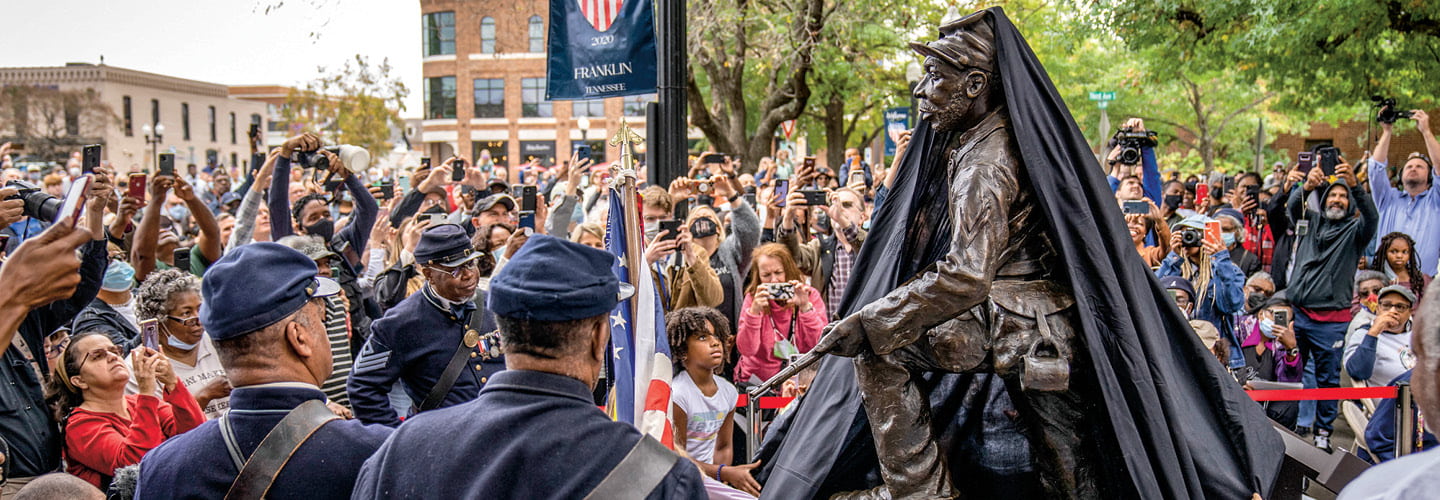For decades, when Pastor Hewitt Sawyers drove past the Confederate monument in his city, he felt the weight of slavery’s long shadow.
Sawyers, 73, attended a segregated school in Franklin, Tennessee. He read from books passed down from the White school. The courthouse had a “colored” water fountain, and the movie theater didn’t welcome him on the lower floor.
Then Confederate monuments began to come down around the country following the killing of a peaceful protester during a 2017 White nationalist rally in Charlottesville, Virginia. Sawyers thought the 37-foot-tall statue of a Confederate soldier—known as “Chip”—in Franklin’s public square should go too.
“Every time I went around that square, [Chip] was a reminder of what had gone on,” he says.
For decades, Pastor Hewitt Sawyers drove past the Confederate monument in his city. Every time he did, he felt the weight of slavery’s long shadow.
Sawyers, 73, attended a segregated school in Franklin, Tennessee. He read from books passed down from the White school. The courthouse had a “colored” water fountain, and the movie theater didn’t welcome him on the lower floor.
Then Confederate monuments began to come down around the country. The mass removal followed the killing of a peaceful protester during a 2017 White nationalist rally in Charlottesville, Virginia. Sawyers thought the 37-foot-tall statue of a Confederate soldier—known as “Chip”—in Franklin’s public square should go too.
“Every time I went around that square, [Chip] was a reminder of what had gone on,” he says.

